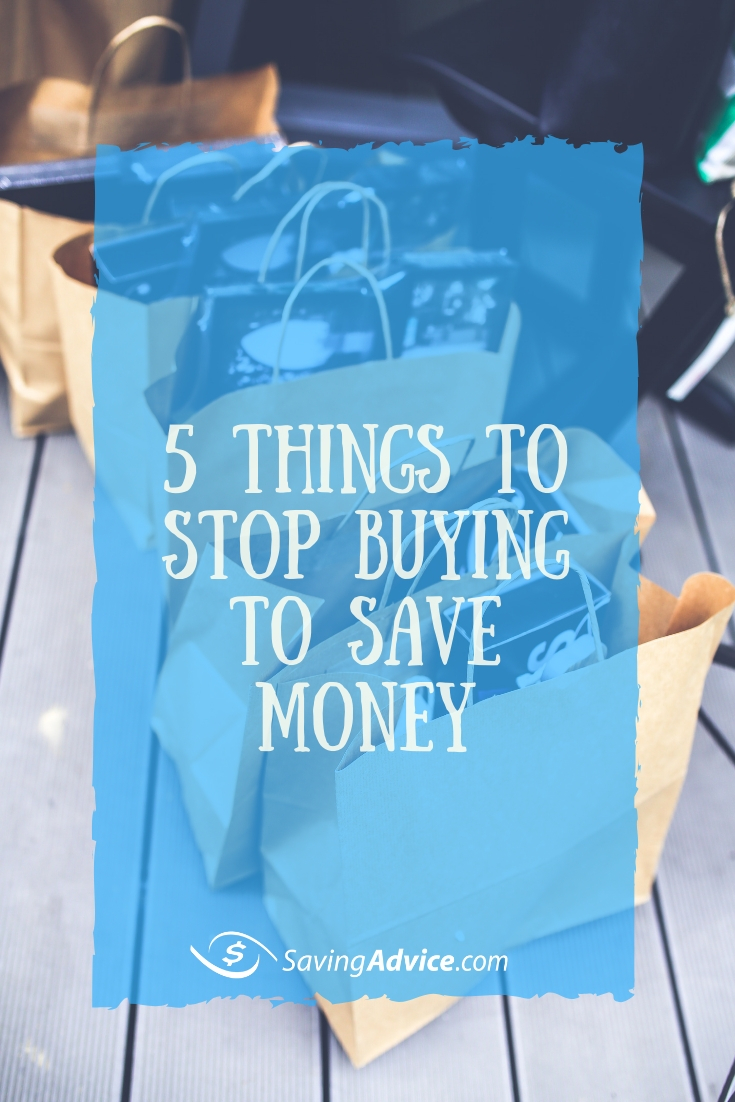
Are you looking for new ways to cut expenses? Here are some things to stop buying to save money, and how it can really add up.
5 Things to Stop Buying to Save Money
Sure, we all know we spend a little too much on lattes and buying lunch instead of making it and bringing it from home. However, there are probably lots of other things we spend money on that we don’t even realize is a waste.
Branded Grocery Items That Are the Same As Generic
Generic grocery items once had a bad reputation of being poor quality groceries. In the past, you only bought store brand or generic groceries if you absolutely had to and if you were willing to feed your family subpar food. However, over the years, shoppers have learned that many generic/store brands are just as good as branded items, and for the most part, are usually significantly cheaper. For example, if you check our Costco price list for Kirkland diapers, cost about $0.15 per diaper versus Huggies, which cost about $0.20 per diaper. Plus, remember this comparison is at Costco, where prices are already lower than other grocery stores.
Savings >$100/month: This will depend on your grocery bill, but because the difference between store brand and name brand groceries is almost 50 percent, you could save $100 or more. That’s half of your grocery bill that can now go into your savings account.
Bathroom Cleaner, Kitchen Cleaner, Soap, and Other Cleaning Products
Very few of us like cleaning anyway, so why not just quit and put the money you’d spend on various scrubbing solutions and cleansers into your savings account?
Well, not really. We can’t just stop cleaning. However, you could save some money if you make your cleaning products instead of buying them. Plus, a lot of the cleaning products on the market consist of harmful chemicals you probably don’t want in your house anyway. We have a list of cleaning product recipes you can use instead.
Savings >$10/month: This might not seem like an enormous chunk of change but it could add up to a couple of hundred dollars per year. Just make sure you use products you already have at home to save even more.

Fast Fashion – More Jeans, Socks, Sweaters, and Other Clothing
Did you know that we buy and get rid of so much clothing that it’s becoming an environmental crisis? Sure, you probably donate and sell your old clothes when you’ve outgrown them or just gotten tired of them. However, a lot of that clothing is ending up in landfills because there just isn’t anything else to do with it.
Instead of buying new clothes, rework what you have. Before you buy another 6-pack of socks that are on sale, think about whether or not you actually need six more pairs of socks – even if they are super cheap.
Savings >$150/month: The average adult spends about $150 per month on clothing. This isn’t even counting what you might spend on your children as well. Put this money in your savings account and also help the environment a little in the meantime.
You Don’t Have to Buy Everything Organic
Many people buy organic food because of the peace of mind you get from eating something that is cleaner and healthier. However, some organic products aren’t cleaner or healthier, and just cost you nearly 50 percent more than the alternatives. Some of the foods you can buy non-organic include:
- Onions
- Pineapple
- Avocado
- Cabbage
- Melons
You might notice many of the safer non-organic products have some kind of outer covering that protects it from harmful pesticides and chemicals. This is why you’re generally safe buying non-organic.
Savings >$50/month: The savings amount varies according to your grocery bill, but adding this with the change to generic products can add at least $150 per month to your savings account.
Personal Checks – Try Online Bill Payment and Banking Instead
Because of mobile payment options, online banking and payment processors like Venmo and Paypal, consumers have found themselves writing fewer and fewer paper checks. Even if you do still depend on checks to make your payments, consider making the change to save some extra money. Online payments are now as secure as offline payment options. With the chance that payment checks will be completely obsolete in the future anyway, with some speculating as early as 2021.
Savings >$10-$25: The cost of personal checks varies according to the bank or company where you buy them. They generally cost about $10 to $25 for a book of 100-200. If you make the transition to online bill payment and banking instead of buying checks twice per year, it can be an additional $20-$50 to your savings account.
Bottom Line
In order to save more money, you’ll need to take a serious look at your budget to figure out where exactly your money is going. Things like generic grocery items, personal paper checks, and cleaning products are extra expenses you might not have realized you don’t need to buy. Once you evaluate, you’ll likely find a lot of other things you can stop buying to save money.
What have you stopped buying to save money? Share with us in the comments below.
Comments